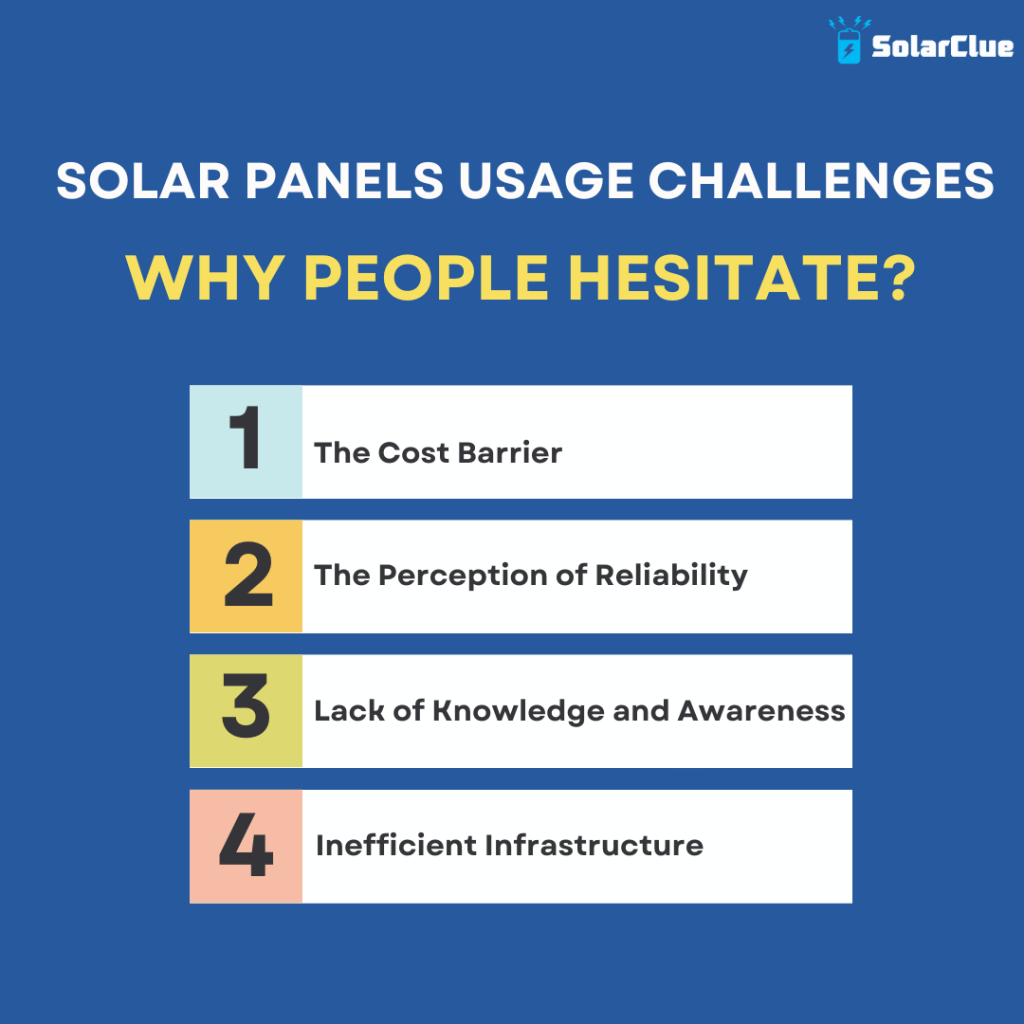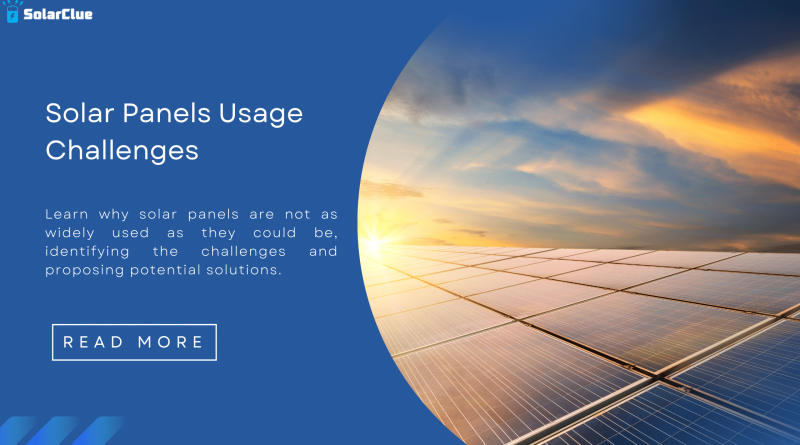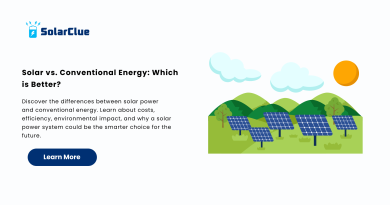Solar Panels Usage Challenges: Why People Hesitate?
Solar panels have become increasingly popular in recent years as a sustainable and renewable source of energy. However, despite the numerous benefits they offer, it is surprising that not more people are using solar panels to power their homes and businesses. This blog explores the solar panels usage challenges and the reasons why solar panels are not as widely adopted as they could be and highlights the potential solutions to this issue. By understanding the barriers that exist, we can work towards a future where solar energy plays a more significant role in meeting our power needs.
People hesitate to use solar panels due to the following challenges:

Table of Contents
Solar Usage Challenge 1: The Cost Barrier
One of the primary reasons why many people do not use solar panels is the initial cost. Initial cost is the one of the solar usage first challege. While the price of solar panels has significantly reduced over the years, it still remains a substantial investment for homeowners and businesses. The installation of solar panels requires upfront expenses for the equipment, permits, and professional installation services. Many individuals are hesitant to make such a financial commitment, especially if they do not plan on staying in the same property for a long time.
Nonetheless, it is important to recognize that solar panels offer long-term savings. Once installed, solar panels can significantly reduce or even eliminate monthly electricity bills. In addition, many governments and organizations provide incentives and subsidies to help offset the cost of installing solar panels. By taking advantage of these programs, the initial investment can be more manageable, making solar panels a financially viable option.
Solar Usage Challenge 2: The Perception of Reliability
One of the significant challenges hindering the widespread usage of solar panels is the perception of reliability. Despite the proven track record of solar technology, there exists a persistent skepticism about the reliability of solar panels to consistently generate power. This perception stems from misconceptions and lack of awareness regarding advancements in solar technology.
The challenge lies in convincing individuals and businesses that solar panels are not only a sustainable but also a reliable source of energy. Addressing this challenge requires education and outreach programs to dispel myths, showcase the reliability of modern solar panels, and highlight successful case studies. By changing the perception of reliability, we can encourage more people to embrace solar energy as a dependable and consistent power solution.
Solar Usage Challenge 3: Lack of Knowledge and Awareness
A key barrier to the widespread use of solar panels is the lack of knowledge and awareness about their benefits. Many individuals simply do not have the necessary information to make an informed decision about solar energy. They may be unaware of the potential savings, government incentives, or the positive environmental impact that using solar panels can have. Without access to accurate and comprehensive information, it is challenging for people to fully understand and appreciate the advantages of solar energy.
To overcome this barrier, it is crucial to promote education about solar energy. Governments, organizations, and renewable energy advocates must work together to conduct awareness campaigns, provide resources, and educate the public about the benefits of solar panels. By making information easily accessible and showcasing real-life success stories, more people can make informed decisions about adopting solar energy as a reliable source of power.
Solar Usage Challenge 4: Inefficient Infrastructure
The final challenge of solar panels usage is Inefficient infrastructure. The lack of supportive infrastructure poses a significant obstacle to the widespread use of solar panels. In many areas, the distribution grid lacks the necessary capacity to handle the integration of solar energy. This deficiency can lead to technical constraints and limitations on the effective generation and utilization of solar power.
To tackle this issue, governments must invest in upgrading the electrical grid to accommodate higher levels of renewable energy. By incorporating smart grid technologies and implementing energy storage solutions, it becomes possible to effectively manage fluctuations in solar power generation and ensure a seamless integration into the existing infrastructure. Upgrading the infrastructure not only promotes the adoption of solar panels but also facilitates the transition toward a more sustainable and resilient energy system.
Conclusion
While the use of solar panels for power generation has gained popularity, significant barriers still impede wider adoption. Factors such as the installation cost, perception of reliability, lack of knowledge and awareness, and an inefficient infrastructure all contribute to hindering the broader use of solar panels.
However, by addressing these barriers head-on, we can pave the way for a future where solar energy plays a significant role in powering our electricity needs. The potential for long-term cost savings, environmental sustainability, and energy independence makes solar panels a compelling option. It is imperative that governments, organizations, and individuals collaborate to overcome these barriers and unlock the full potential of solar energy.
If you’re looking to embrace solar energy, our Solarclue is here to help you navigate through these challenges and make the switch to a sustainable and cost-effective power source. Together, let’s build a future powered by clean and renewable energy.
Frequently Asked Questions
While the initial installation cost can be higher, long-term savings and incentives make solar panels cost-effective.
Yes, solar panels can generate power in cloudy conditions, though their efficiency may be slightly reduced.
Manufacturers are adopting sustainable practices, but it’s essential to consider the overall environmental footprint.
Yes, advancements are being made to create visually appealing solar panels that blend seamlessly with architectural designs.
Many governments offer incentives, tax credits, and streamlined regulations to encourage the installation of solar panels.
Solar panels can work in various climates, but their efficiency may vary based on factors like sunlight exposure and temperature.
Solar panels are an excellent solution for remote areas, providing a sustainable and reliable source of energy.
Proper recycling methods exist to minimize the environmental impact of solar panel disposal.
Ongoing research and technological innovations aim to enhance the efficiency and affordability of solar panels.
Community-driven initiatives, combined with education and collaboration, can pave the way for successful solar panel projects.



